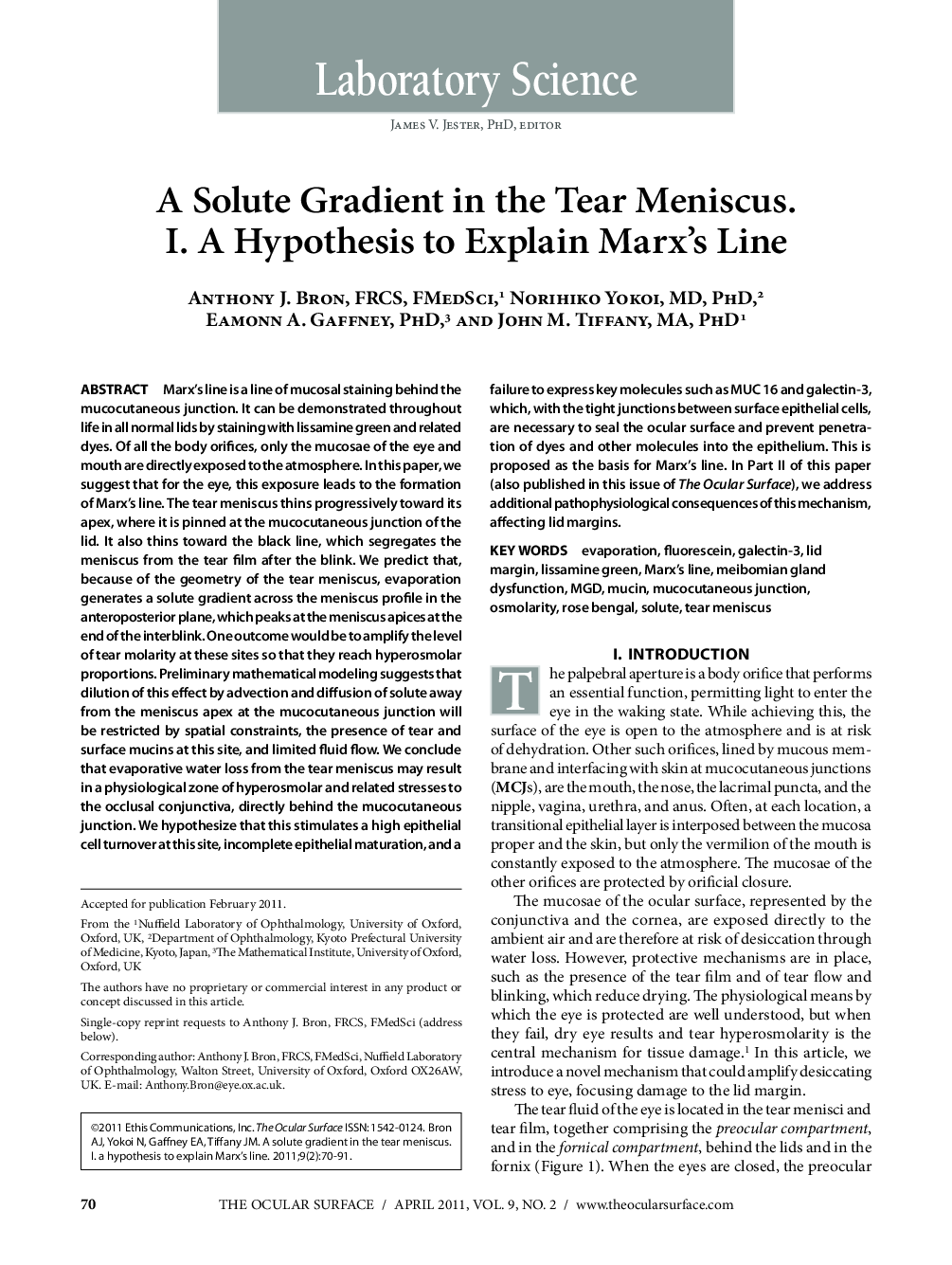| کد مقاله | کد نشریه | سال انتشار | مقاله انگلیسی | نسخه تمام متن |
|---|---|---|---|---|
| 2695525 | 1143776 | 2011 | 22 صفحه PDF | دانلود رایگان |

Marx's line is a line of mucosal staining behind the mucocutaneous junction. It can be demonstrated throughout life in all normal lids by staining with lissamine green and related dyes. Of all the body orifices, only the mucosae of the eye and mouth are directly exposed to the atmosphere. In this paper, we suggest that for the eye, this exposure leads to the formation of Marx's line. The tear meniscus thins progressively toward its apex, where it is pinned at the mucocutaneous junction of the lid. It also thins toward the black line, which segregates the meniscus from the tear film after the blink. We predict that, because of the geometry of the tear meniscus, evaporation generates a solute gradient across the meniscus profile in the anteroposterior plane, which peaks at the meniscus apices at the end of the interblink. One outcome would be to amplify the level of tear molarity at these sites so that they reach hyperosmolar proportions. Preliminary mathematical modeling suggests that dilution of this effect by advection and diffusion of solute away from the meniscus apex at the mucocutaneous junction will be restricted by spatial constraints, the presence of tear and surface mucins at this site, and limited fluid flow. We conclude that evaporative water loss from the tear meniscus may result in a physiological zone of hyperosmolar and related stresses to the occlusal conjunctiva, directly behind the mucocutaneous junction. We hypothesize that this stimulates a high epithelial cell turnover at this site, incomplete epithelial maturation, and a failure to express key molecules such as MUC 16 and galectin-3, which, with the tight junctions between surface epithelial cells, are necessary to seal the ocular surface and prevent penetration of dyes and other molecules into the epithelium. This is proposed as the basis for Marx's line. In Part II of this paper (also published in this issue of The Ocular Surface), we address additional pathophysiological consequences of this mechanism, affecting lid margins.
Journal: The Ocular Surface - Volume 9, Issue 2, April 2011, Pages 70–91